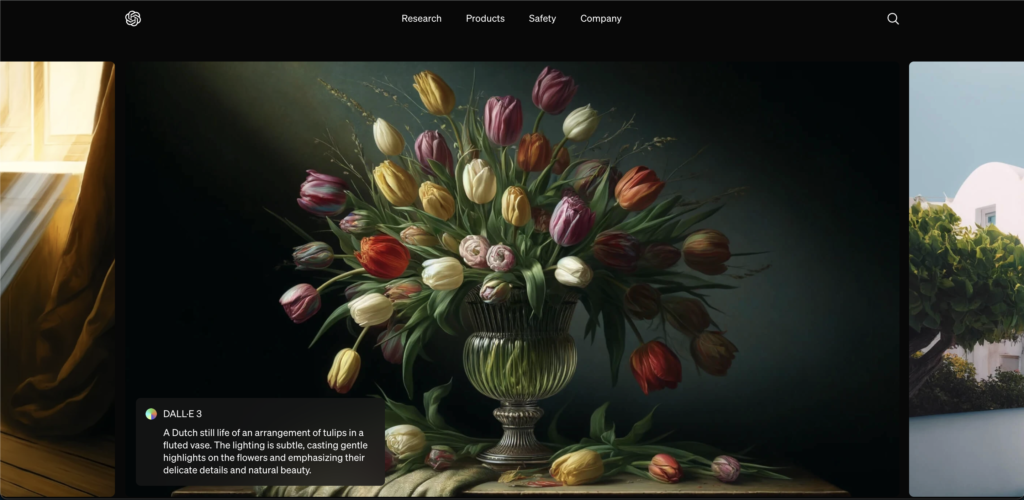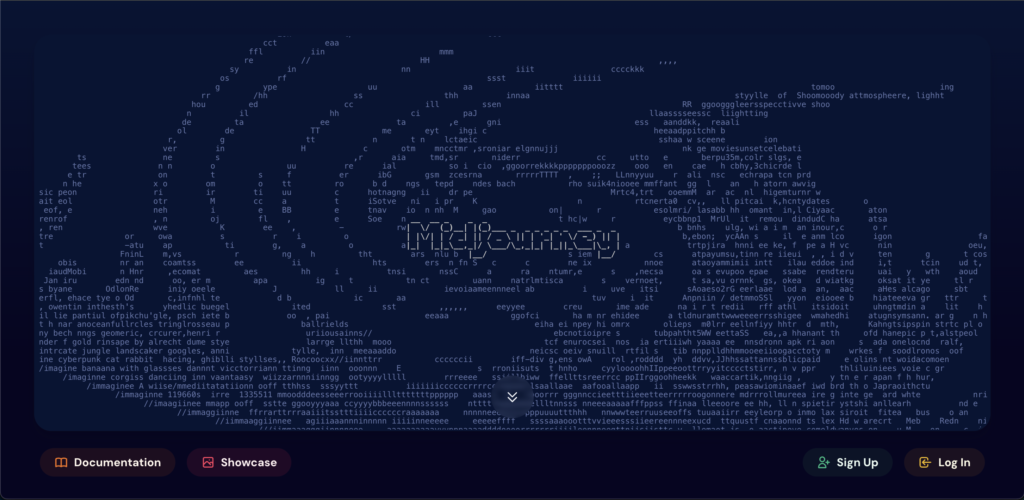The world of visual creation is undergoing a profound transformation, thanks to the advent of Artificial Intelligence (AI). AI image generators are rapidly changing the way we design, illustrate, and conceptualize, making it possible for anyone to create stunning and imaginative visuals with ease. From artists and designers to marketers and casual users, AI image generators are opening up a world of creative possibilities.
I. Introduction
The Rise of AI in Visual Creation
AI has already revolutionized numerous fields, and its impact on visual creation is undeniable. AI image generators have emerged as powerful tools, capable of generating images from textual descriptions, transforming existing images, and even creating entirely new artistic styles. This technological breakthrough has made image creation more accessible, efficient, and inspiring than ever before.
What Are AI Image Generators?
AI Image Generators are sophisticated software programs that leverage machine learning algorithms to create images. These algorithms are trained on massive datasets of images and their corresponding text descriptions, allowing them to understand the relationships between words and visual concepts. This understanding enables AI image generators to translate textual prompts into visually stunning images, blurring the lines between human creativity and artificial intelligence.
Why Use AI Image Generators?
The benefits of AI image generators extend well beyond the realm of professional artists and designers, offering advantages for a wide range of applications:
- Increased Productivity: AI image generators can streamline the creative process, allowing users to quickly iterate through different concepts and generate multiple variations of an image with a few clicks. This can save countless hours of manual design work.
- Cost Savings: Traditional methods of image creation often involve hiring professional illustrators or designers, which can be expensive. AI image generators provide a cost-effective alternative, making high-quality visuals accessible to individuals and businesses with limited budgets.
- Accessibility: AI image generators break down creative barriers by making image creation accessible to anyone, regardless of artistic skill or technical expertise. Users can simply describe what they envision, and the AI will bring their ideas to life.
- Creative Inspiration: AI image generators can spark inspiration and push creative boundaries. By experimenting with different prompts and styles, users can discover unexpected and innovative visual results that might not have occurred to them otherwise.
II. How AI Image Generators Work
Text-to-Image Generation
The core technology powering AI image generators is text-to-image generation. This involves training complex deep learning models, such as diffusion models or Generative Adversarial Networks (GANs), to understand the intricate relationships between text descriptions and visual representations.
- Diffusion Models: These models work by gradually adding noise to an image until it becomes pure noise, and then learning to reverse this process, starting from pure noise and gradually generating a clear image based on the provided text prompt.
- GANs: GANs consist of two competing neural networks: a generator and a discriminator. The generator attempts to create realistic images, while the discriminator evaluates the generated images and tries to distinguish them from real images. Through this adversarial process, the generator learns to produce increasingly convincing and realistic images.
Prompts: The Language of AI Art
Crafting effective prompts is crucial for getting the desired results from an AI image generator. Prompts act as instructions, guiding the AI towards generating the specific image you envision. A compelling prompt should be:
- Descriptive: Provide clear details about the scene, objects, characters, and overall mood you want the image to depict.
- Specific: Include precise adjectives and adverbs to refine the style, composition, and visual elements.
- Creative: Don’t be afraid to experiment with unusual words, metaphors, and artistic references to trigger unique and unexpected visual results.
Customization: Shaping Your Vision
AI image generators offer a range of options for customizing the generated art, allowing users to exert greater control over the final output:
- Artistic Styles: You can specify the desired art style, such as realism, impressionism, cartoon, anime, or even a specific artist’s signature style.
- Composition: Control the layout, perspective, and arrangement of elements within the image.
- Details: Adjust the level of detail, including textures, lighting, and shadows.
III. In-Depth Review of Leading AI Image Generators

DALL-E 3 (OpenAI)
DALL-E 3 is a powerful text-to-image AI model developed by OpenAI, renowned for its ability to generate incredibly photorealistic and creative images.
- Overview: DALL-E 3 stands out for its unparalleled ability to capture the essence of complex prompts and translate them into visually stunning and often surreal images. It excels at generating realistic images of objects, scenes, and even abstract concepts.
- Pros/Cons:
- Pros:
- Exceptional image quality, achieving photorealism in many cases.
- Excellent at understanding and interpreting complex prompts.
- Offers a user-friendly interface and excellent accessibility.
- Cons:
- Can sometimes struggle with highly detailed or specific visual requests.
- The free tier offers a limited number of image generations per month.
- Pros:
- Ideal For:
- Artistic expression, exploring new visual ideas, and generating unique concepts.
- Marketing and advertising campaigns, creating visually captivating visuals.
- Generating illustrations for books, websites, and other creative projects.

Midjourney
Midjourney is an AI image generator that has captured the imagination of artists and designers worldwide for its ability to generate unique and artistic visuals.
- Overview: Midjourney operates through a Discord server, where users can submit their prompts and receive the generated images directly in the chat. It’s known for its ability to generate images with a distinct and often surreal aesthetic.
- Pros/Cons:
- Pros:
- A vibrant and supportive community of artists and designers on its Discord server.
- Generates images with a unique, often dreamlike and imaginative style.
- Offers a range of options for customizing the generated art.
- Cons:
- Requires access to Discord, which can be a barrier for some users.
- It can be difficult to control the specific details and elements of the generated images.
- Pros:
- Ideal For:
- Artists, designers seeking unique and expressive visual styles.
- Those who appreciate a community-driven creative platform.
- Generating concept art, album covers, and other visually evocative images.

Stable Diffusion
Stable Diffusion is an open-source AI image generator that offers unparalleled flexibility and customization.
- Overview: Unlike DALL-E 3 and Midjourney, which are primarily web-based platforms, Stable Diffusion is an open-source model that can be run locally or on cloud computing platforms. This flexibility grants users greater control over various aspects of the image generation process.
- Pros/Cons:
- Pros:
- Highly customizable, allowing advanced users to fine-tune model settings and parameters.
- Free to use, as it’s an open-source project.
- Offers extensive community support and numerous resources for customization.
- Cons:
- Requires technical expertise to set up and run the model locally.
- Generating high-quality images may require powerful hardware or cloud computing resources.
- Pros:
- Ideal For:
- Technologically-savvy users, researchers, and developers who want full control over the image generation process.
- Those who wish to experiment with different model parameters and artistic styles.
Other Notable Generators
NightCafe Creator: Offers a cloud-based platform with a user-friendly interface, making it accessible to beginners. It stands out for its artistic filters and various AI art styles.
DreamStudio (Stable Diffusion Web Interface): A web-based interface for Stable Diffusion, providing an easier way to interact with the open-source model without requiring local installation.
Artbreeder: Specializes in generating variations of images, particularly for portraits, animals, and landscapes. It allows users to blend existing images and create unique hybrids, perfect for exploring genetic variations.
Deep Dream Generator: Known for its artistic and psychedelic image transformations. It employs algorithms inspired by the human visual cortex, creating visually captivating and dreamlike images.
IV. Comparison Table
| Feature | DALL-E 3 | Midjourney | Stable Diffusion |
|---|---|---|---|
| Ease of Use | High | Medium | Low |
| Image Quality | High | High | High/Varies |
| Customization | Medium | High | High |
| Artistic Styles | Diverse | Unique | Customizable |
| Pricing | Freemium | Subscription | Free/Varies |
| Ideal For | General use, Marketing | Artists, Designers | Tech-savvy, Experimentation |
V. Choosing the Right AI Image Generator
The best AI image generator for you depends on your specific needs and preferences. Consider the following factors:
- Budget: DALL-E 3 offers a free tier with limited generations, while Midjourney requires a paid subscription. Stable Diffusion is free to use, but may require significant hardware investments or cloud computing costs.
- Skill Level: DALL-E 3 and NightCafe Creator offer user-friendly interfaces suitable for beginners. Stable Diffusion requires a greater level of technical knowledge.
- Desired Output Style: If you seek photorealism, DALL-E 3 might be the best choice. Midjourney excels at generating unique and artistic visuals. Stable Diffusion offers the most flexibility for tailoring the output style.
Recommendations Based on Use Cases:
- Quick & Easy: DALL-E 3 is ideal for users who need to quickly generate high-quality images without extensive customization.
- Artistic Expression: Midjourney is perfect for artists and designers seeking to create visually captivating and unique artwork.
- Technical Users: Stable Diffusion is the best choice for developers, researchers, and users who want full control over the image generation process.
VI. Ethical Considerations and the Future of AI Image Generation
The rapid advancement of AI image generation raises important ethical considerations that we must address.
Copyright and Ownership
The question of who owns the copyright to AI-generated art is complex and evolving. Since the AI is the creator, it poses a challenge to traditional notions of authorship and intellectual property.
- Current legal frameworks are struggling to adapt to AI-generated content, leading to uncertainty about ownership and legal protections.
- Some argue that AI-generated art should be placed in the public domain, while others believe that the creators of the AI models should retain ownership.
- It’s crucial to develop clear guidelines and legal frameworks to address these issues, ensuring that artists and creators are appropriately compensated for their work.
Potential Misuse
While AI image generators offer tremendous creative potential, they also raise concerns about potential misuse.
- Deepfakes: AI can be used to create highly realistic and convincing videos of individuals saying or doing things they never actually did, with potentially harmful consequences.
- Misinformation: AI-generated images can be used to create and spread false information, leading to deception and manipulation.
- Ethical Implications: It’s essential to use AI image generators responsibly, considering the potential impact on individuals and society as a whole.
The Future of AI Image Generation
The field of AI image generation is evolving at an incredible pace. We can expect to see:
- Enhanced Realism: AI models will become even more adept at generating photorealistic images, blurring the line between reality and artificial creation.
- Increased Customization: Users will gain more control over generating images with even greater precision, allowing for fine-grained control over details, styles, and compositions.
- New Applications: AI image generation will continue to find new applications in various fields, including film, design, education, and scientific research.
VII. Methodology: Assessing DALL-E 3, Midjourney, and Stable Diffusion
1. Identifying Key Evaluation Criteria
- Ease of Use:
- Interface: How intuitive is the platform for beginners and experienced users?
- Prompting: How easy is it to craft effective prompts for desired results?
- Customization: How much control is offered over image style, details, and composition?
- Output Options: How flexible are the options for image size, format, and quality?
- Learning Resources: Availability of tutorials, guides, and community support.
- Image Quality:
- Resolution: Maximum resolution offered and level of detail in generated images.
- Coherence: How well does the image match the prompt’s description?
- Aesthetics: Overall visual appeal, creativity, and artistic style of the generated images.
- Photorealism vs. Artistic Style: Ability to generate both photorealistic and artistic images.
- Artifacting: Presence of any visual distortions or inconsistencies.
- Performance:
- Speed: How quickly does the model generate images?
- Cost: Are there usage limitations, subscription fees, or pay-per-image models?
- Hardware Requirements: What computing resources are needed for optimal performance (GPU, RAM)?
2. Testing and Evaluation
- Trial Access:
- DALL-E 3: Access through ChatGPT Plus (paid subscription)
- Midjourney: Free trial with limited images, then subscription plans
- Stable Diffusion: Open-source, accessible through various interfaces (some free, some paid)
- Prompt Creation:
- Develop a set of diverse prompts to test different styles, subjects, and complexity levels.
- Include prompts for both photorealistic and artistic images.
- Image Generation:
- Generate multiple images for each prompt across all platforms.
- Experiment with different customization options to evaluate their impact.
- Evaluation:
- Assess the quality of generated images based on the criteria above.
- Compare the output across platforms for each prompt.
- Note the time taken for image generation.
- Document user experience and any issues encountered.
3. Comparison and Analysis
- Qualitative Analysis:
- Compare image quality, aesthetics, and adherence to prompts.
- Consider the unique strengths and weaknesses of each platform.
- Quantitative Analysis:
- Compare image generation speed and cost efficiency.
- Use surveys or rating scales to gather feedback on user experience.
- Consider Target Audience:
- DALL-E 3: Best for general use, marketing, and those seeking ease of use.
- Midjourney: Ideal for artists, designers, and those looking for unique artistic styles.
- Stable Diffusion: Suited for tech-savvy users, researchers, and those who want full customization control.
4. Reporting Findings
- Comprehensive Review: Write a detailed article summarizing the evaluation process, findings, and recommendations.
- Comparison Table: Create a table comparing the key features and performance metrics of each platform.
- Visual Examples: Include high-quality images generated by each platform to showcase their capabilities.
Important Considerations:
- Ethical Use: Address the potential for misuse of AI-generated images, such as deepfakes and copyright infringement.
- Evolving Technology: Acknowledge that AI image generation is rapidly advancing, and new models and features are constantly emerging.
By following this comprehensive methodology, you can provide a thorough and informative assessment of these leading AI image generators, helping users make informed decisions based on their specific needs and priorities.
VIII. User Experience and Performance aspects of DALL-E 3, Midjourney, and Stable Diffusion, three leading AI image generators:
User Experience (UX)
| Feature | DALL-E 3 | Midjourney | Stable Diffusion |
|---|---|---|---|
| Interface: | High (Clean, intuitive, browser-based) | Medium (Requires Discord knowledge) | Low (Requires technical setup for local use) |
| Prompting: | High (Natural language, conversational) | High (Powerful but requires specific syntax) | Medium (Requires understanding of parameters) |
| Customization: | Medium (Limited controls within the interface) | High (Extensive parameters and styles) | High (Highly customizable through code) |
| Output Options: | Medium (4 variations per prompt) | Medium (Can generate multiple variations) | High (Unlimited variations with tweaking) |
| Learning Resources: | High (Tutorials, examples, community forum) | Medium (Community guides, forums) | Low (Primarily community-driven support) |
Performance
| Feature | DALL-E 3 | Midjourney | Stable Diffusion |
|---|---|---|---|
| Image Quality: | High (Photorealistic, creative) | High (Artistic, diverse styles) | High/Varies (Depends on model and settings) |
| Speed: | Fast (Near-instantaneous) | Medium (Varies depending on server load) | Varies (Highly dependent on hardware) |
| Cost: | Freemium (Limited free credits, then paid) | Subscription (Various tiers) | Free/Varies (Open-source, paid interfaces exist) |
Detailed Analysis
- DALL-E 3: Offers the most seamless user experience, thanks to its intuitive interface and natural language prompts. It’s great for beginners and those seeking quick results. However, customization options are limited within the interface. Image quality is consistently high, especially for photorealistic outputs.
- Midjourney: Requires some familiarity with Discord, but offers a powerful and flexible prompting system that allows for highly customized results. It excels at generating artistic and unique visuals, but the learning curve might be steeper for some users.
- Stable Diffusion: Provides the most customization potential, but it requires technical knowledge to set up and run locally. This makes it a great choice for experienced users who want complete control over the image generation process. Image quality can vary depending on the model and settings used.
Additional Notes
- User Interface: DALL-E 3’s streamlined interface makes it easy to generate images quickly, while Midjourney’s Discord-based interface offers a unique community-driven experience. Stable Diffusion often requires the use of third-party interfaces, which vary in usability.
- Prompting: Midjourney and Stable Diffusion have more intricate prompting systems that allow for fine-grained control over image details, while DALL-E 3’s simpler approach is more beginner-friendly.
- Customization: Stable Diffusion offers the most extensive customization options, but requires technical expertise. Midjourney offers a wide range of styles and parameters within its Discord interface. DALL-E 3’s customization is more limited but still allows for some control over the output.
Overall
The best AI image generator for you depends on your specific needs and preferences. Consider your experience level, desired output style, and budget when making your choice.
- If you prioritize ease of use and quick results, DALL-E 3 is a great option.
- If you want to explore unique artistic styles and are willing to learn a new interface, Midjourney is worth considering.
- If you’re tech-savvy and want maximum control over image generation, Stable Diffusion offers the most flexibility.
IX. Conclusion
AI image generators have ushered in a new era of visual creation, empowering anyone to generate stunning and imaginative images. From its use in enhancing creativity and productivity to its potential for cost savings and accessibility, AI is transforming the landscape of visual arts.
Remember that choosing the right AI image generator depends on your needs and preferences. Explore the different platforms, experiment with prompts, and embrace the innovative world of AI-powered art.
Don’t hesitate to share your AI-generated creations with the world and contribute to the growing community of AI artists.

